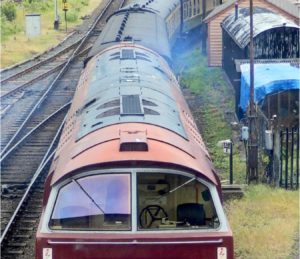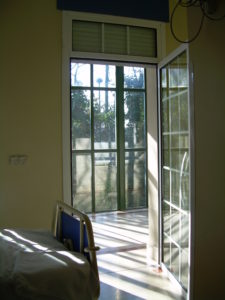Editor: You can find earlier posts on budgets, by using the search function, and all posts by Mark by selecting his name.
 Further to my earlier posts about asset budgets, I couldn’t help but want to have another go at this by asking a slightly different set of questions. These relate to the principle of transparency.
Further to my earlier posts about asset budgets, I couldn’t help but want to have another go at this by asking a slightly different set of questions. These relate to the principle of transparency.
By transparency I mean:
Is there a clear and documented basis for the estimates upon which the asset budget has been based?
- Are the estimates based on ‘simple’ or ‘averaged’ projections of expenditure rather than ‘modelled’ projections that emulate realistic timings and patterns of expenditure for the nature of the works involved and how they will be procured?
- Is it based on estimates for all assets over the full period that the budget is meant to address? By all I really mean a schedule that lists all of the assets, including those for which a $NIL expenditure is forecast for the relevant period. (I ask this as a check that all assets have been given consideration.)
- Are the underlying assumptions documented and made clear to those being asked to approve the budget – especially the reliability / sensitivity of rates used and associated finance costs?
- Are the priorities inherent and sequencing / pace of the proposed works also made clear and demonstrably aligned with corporate business and services priorities for the forecast period? How does this align with projected cashflow requirements and funding availability? (A projection showing a skewed acceleration of expenditure towards the final quarter must raise concerns – not only about reliability of delivery, but also in relation to business and services priorities being effectively supported, and in relation to getting value for money from what is going to be spent.)
- Are the risks that are inherent to the portfolio and the proposed program delivery made clear and ‘current’ for the immediate and forecast context of the program and its delivery?
If these aspects are not transparent to the decision-makers then there is greater risk that the program will not be delivered and the budget will be nowhere near accurate
 The value of “value management”, as Mark Neasbey, Director of the Australian Centre for Value Management, has illustrated in each of his previous posts, is in challenging what we think we know. In “The Power of ‘What if?'” he reveals how questioning a ‘given’ led to a radically different solution and a saving of hundreds of millions of dollars. Mark writes:
The value of “value management”, as Mark Neasbey, Director of the Australian Centre for Value Management, has illustrated in each of his previous posts, is in challenging what we think we know. In “The Power of ‘What if?'” he reveals how questioning a ‘given’ led to a radically different solution and a saving of hundreds of millions of dollars. Mark writes:
The types of things that are generally in a list of givens include:
- a law or regulation that has to be complied with;
- a technical performance requirement – be it a range or a set minimum or maximum number or a specific number – which can represent dimensions, volumes, rates and so on;
- a limiting boundary or barrier or a technical constraint;
- financial – e.g. an amount not to be exceeded or specified sources of funding, interest rates and so on;
- ownership and operating arrangements;
- authorities and delegations;
- a specific time or date that the asset is required or to be disposed of; and
- application of a particular process or corporate policy.
[Not an exhaustive but just some main examples.]
Now the thing about such givens is that we develop our options or solutions accepting these, rather than challenging them. So they tend not to come into creative thinking processes, accept as a limitation. Yet what happens if its not really a given, rather it turns out to be possible to change it – even if only to treat it as an assumption?
A recent rail project to develop expanded train maintenance and stabling facilities began with a given that the existing mainline was fixed – it could not be changed. By not allowing it to be moved the project solution involved some complex and expensive engineering and infrastructure to manage the train movements into and out of the depot, which are planned to eventually have headways as short as 30 seconds. [Driverless trains.] There was also an effect on how the layout of the expanded facility could be realised – it was not going to be as ideally efficient as possible to operate.
During a value engineering review however, the effects of not moving the mainline to the engineered solution became clearly a cause – not of concern – but for a better appreciation of the opportunity forgone to create a simpler, more elegant engineered solution and at a huge cost reduction.
The mainline alignment had been stated as a given by the client early in the planning process. So all of the initial feasibility work and preliminary concepts evolved based on that given. What subsequently emerged in the value engineering review was that this arose from a decision not to acquire a particular developed property adjacent to the line.
By asking the simple question “what if…?” the team was able to show a much better outcome was possible – not only at a lower capital cost, but with significant long term reduction in maintenance and operational risks to the network.
Two important highlight lessons to me are:
- Do you have an understanding of what is being labelled or taken as givens for your assets and asset strategies?
- Do you have a process to all testing and challenging of such givens so decision-makers are aware of their implications?
The Task today: An answer to either of Mark’s questions OR an example of a positive ‘What if?” challenge of your own.
 This is the fourth of a series of posts by Mark Neasbey, a director in the Australian Centre for Value Management examining the role of the planning budget. In the first Mark considered the differing attitudes that may be taken to strict adherence to the budget and in the next two, he gave examples of the problems this had created for a major teaching hospital and for a mining operation. In this, the last of the present series, Mark considers how a planning budget can be constructed and utilized to smooth the path of the capital budget.
This is the fourth of a series of posts by Mark Neasbey, a director in the Australian Centre for Value Management examining the role of the planning budget. In the first Mark considered the differing attitudes that may be taken to strict adherence to the budget and in the next two, he gave examples of the problems this had created for a major teaching hospital and for a mining operation. In this, the last of the present series, Mark considers how a planning budget can be constructed and utilized to smooth the path of the capital budget.
It’s good business practice to require planning for asset projects to look well ahead of the short-term i.e the current financial reporting period. This is because assets typically last many years and impose long-term costs to the business or government service.
Good practice also involves life-cycle planning around the asset project – what it costs to establish, what needs to be spent to keep it operating, periodic costs for replacement and renewal of plant and equipment and also periodic refurbishment necessary to sustain functionality, safety, image etc. This extends to considering disposal – when an asset is no longer needed – what has to be done to get rid of it. This principle applies equally to physical assets and soft assets such as computer software or systems.
So when an initial concept is proposed, what sort of things need to be addressed and what’s the significance of these to the budget?
Well a key starting point has to be determining its purpose – what is the asset supposed to do? What are the business or service functions that the asset must accommodate or support? Why can’t these functions be undertaken some other way, without the need for the asset project?
These questions can’t be answered without research, we need to test and clarify the scope of the project so we can set a reasonable capital budget. That means we have to start with a planning budget so the planning and analysis work can be done to decide a) the functions that the organisation needs to deliver; b) the options that should be considered for delivering those functions – including non-asset strategies; c) determine the relative merits of the options – key pros and cons, including business (service delivery) risks.
 This post by Mark Neasbey, a Director of the Australian Centre for Value Management, is the third in a series of posts on the role of the capital budget in infrastructure decision making. In this post Mark examines the issues facing a mine expansion.
This post by Mark Neasbey, a Director of the Australian Centre for Value Management, is the third in a series of posts on the role of the capital budget in infrastructure decision making. In this post Mark examines the issues facing a mine expansion.
The mining operation planned to do two things – one, expand its processing facilities to deliver increased product volumes to exacting customer specifications and two, change from road to rail transport for the whole journey to the port. An important third aspect of importance was getting the timing to market right to optimise prices and revenue.
A design for the processing facility had been prepared as well as a proposed rail alignment and rolling stock and operating schedule, which enabled a direct loading from the processing plant to train wagons. Existing operations relied on road transport to a rail transfer point some 40kms from the mine plant. This needed a large workforce and truck fleet and associated scheduling activities to meet shipping schedules at the port.
In this instance the key decisions that the company executives had to make were how much disruption to supply its customers could tolerate during the weeks needed to expand the plant and what would be the reliability of the delivery program to meet the market opportunity. Their value management study helped them to assess the options to refine both the plant design and the proposed rail arrangements in a way that minimised disruptions to the existing plant operations – so product could still flow to customers and continue to generate cash flow for the business. This was possible with a relatively minor increase in use of capital funds in the works at the plant with the rail works staging able to occur in parallel.
Whilst ongoing operating costs were reduced and volumes (and price yield) increased there were some additional asset implications. A significant reduction in the workforce enabled a portion of the accommodation, recreation etc. facilities to be redeployed to another operation and otherwise disposed of, reducing ongoing site maintenance cost.
Concluding Comments A budget for asset projects is expected to change during the life of the project – but why it changes and whether that is up or down is something that must be actively managed. It should not be blindly adhered to, let alone ignored. An asset project affects operating (recurrent) costs and potential revenue as well as capital, which are also important considerations for the decision-makers.
Question for today: What ‘take-away’ do you take away from this?
 This post is by Mark Neasbey, a Director of the Australian Centre for Value Management. In this post Mark presents an example of the dilemma of the different attitudes to planning budgets identified in his last post – and how they may be overcome.
This post is by Mark Neasbey, a Director of the Australian Centre for Value Management. In this post Mark presents an example of the dilemma of the different attitudes to planning budgets identified in his last post – and how they may be overcome.
A major teaching hospital complex had reached a decision point about what the project must deliver vs the projected capital cost. Hospital facilities undergo periodic redevelopment driven by substantive changes in health care practices (models of care) and capacity to service growing populations.
Here the planning involved creating new facilities and demolishing older buildings. The models of care and health outcome objectives were clearly defined and endorsed but were complicated by the arrangement of services across the campus and the recurrent cost constraints on the health services. Moving functions around to create space for the new facilities was one aspect and another was inefficient service delivery arrangements which had evolved over time and which were compromised by the inflexibility of the existing facilities.
So it was not possible and not appropriate to just focus on the capital project cost.
These tensions were recognised and tested in a value management study process that worked through the schematic design, the relationships between services across the campus and the sequence and timing of moving services around and into the new facilities. This made it clear that the space requirements and associated capital project budget exceeded the original estimate.
Question was: Should the budget be left where it was and the scope of the initial redevelopment stage reduced, or should the budget be increased to enable it to be made larger?
By focusing on the clinical outcomes and hospital operating (i.e. recurrent) costs it was clear to senior management that a change in scope for the first stage was vital. Adding extra floor space in stage 1 enabled significant reduction in operating costs ($10m p.a.). But the extra $30m for stage 1 also enabled the second stage to be a much lower cost development – a simpler demolition and a ‘cleaner’ new build.
Question for today: What ‘take-away’ do you take away from this?
 This post by Mark Neasbey, a director in the Australian Centre of Value Management is the first of four that looks into the role of the budget in infrastructure decision making.
This post by Mark Neasbey, a director in the Australian Centre of Value Management is the first of four that looks into the role of the budget in infrastructure decision making.
We are about to undertake a capital project for which we need a planning budget. We have chosen a figure that we think is affordable and justifiable and off we go with planning. We employ architects, engineers, cost planners and other specialists to work up a proposal. They’re all qualified experts so we can rely upon their advice to give us a value for money solution. Right?
But now we strike a problem. To some the capital project’s budget figure becomes the target to realise and push beyond, because once the decision-makers see the brilliance and worth of the proposal they’ll get the extra money – that way we don’t have to compromise on anything! Right?
For others, it’s the opposite – a barrier that must not be exceeded – the limit that has to be imposed irrespective of what compromises must be made. We simply cannot afford to pay any more. This is because no capital project should be seen in isolation of the whole business. The organisation’s other priorities will also need to be appreciated so the best overall outcomes can be realised.
Both attitudes have some merit.
Our question today is: How can they be reconciled?
 Today’s post is by Mark Neasbey of the Australian Centre for Value Management
Today’s post is by Mark Neasbey of the Australian Centre for Value Management
We’ve all heard the line, usually around election cycles “crime is a concern to the community, crime rates are getting worse under this government – we can do better and we’ll put more police out there…blah, blah blah”. The proposal is never costed but always described as affordable and “there’ll be no tax increases to pay for this…blah, blah, blah”.
The extra police need somewhere to work – so we need more police stations. They need vehicles to respond to incidents and do their follow-up interviews etc. So we’ll need to buy more cars for them as well. So we’ve already locked-in some infrastructure commitments just bydeciding to employ more police. Well, Well, of course, the extra police are successful in arresting more suspects – that’s what you’ve employed them to do. These additional suspects need to be brought to justice. That means more appearances before magistrates and judges. But to get there they first must have legal representation and also more prosecutors – so the Director of Public Prosecutions needs more staff and most likely also needs more offices and support facilities. So a second infrastructure impact is becoming evident. The successful arrest and presentation of suspects before the courts could mean the need to appoint more magistrates and judges to deal with the increased number of cases, which in turn could mean the need for additional court rooms and related holding cells for the suspects. So we now have a third potential commitment for additional infrastructure.
But wait – there’s more…. Read More →

Recent Comments